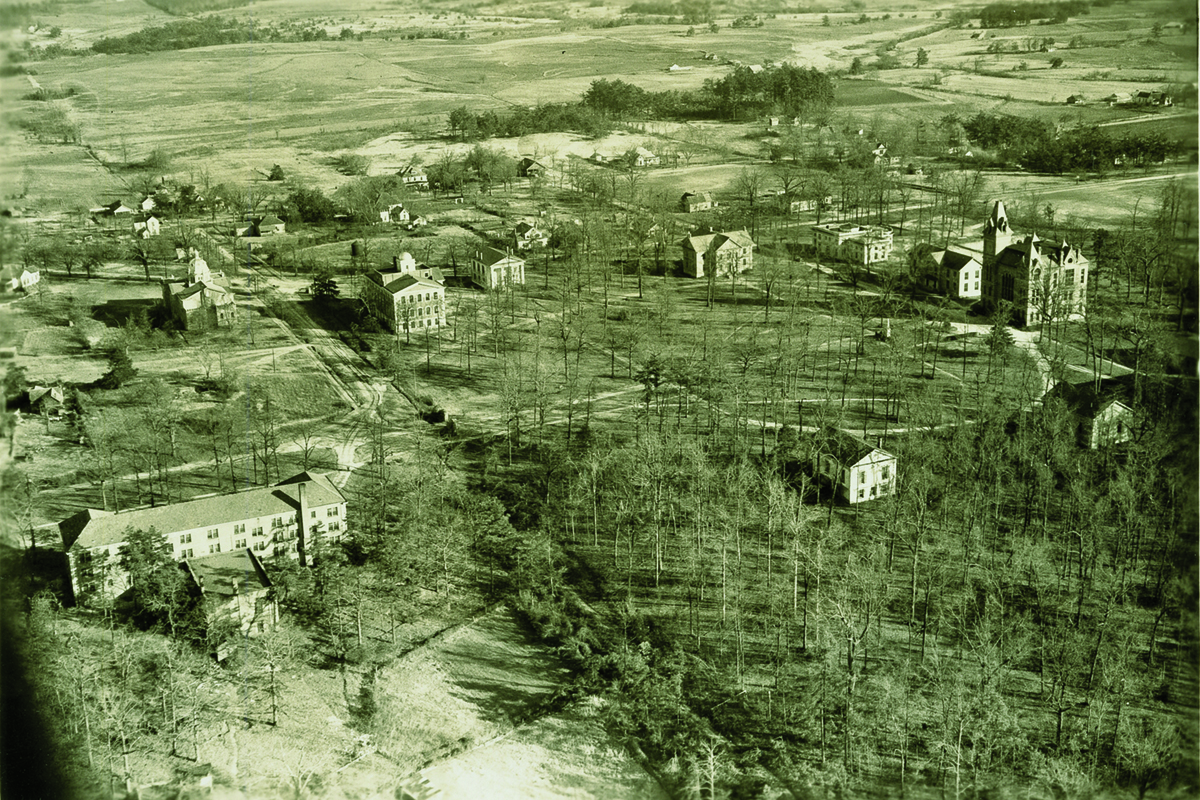Where We Began

1. Where We Began
Founded by Georgia Methodists as a school for farm boys and planters’ sons, the Emory College of 1841 consisted of a few scattered buildings and an inaugural graduating class of three, whose tuition was about $185 a year. Today Emory’s two-year college in Oxford is still recognized for its intimate community—about 930 students—and picturesque setting. The oldest building on campus, Phi Gamma Hall, was used as a hospital during the Civil War; a Confederate nurse is said to haunt the place, startling students during their late-night study sprees. The historic Seney Hall, named for the railroad magnate who bankrolled it, features a clock tower with a copper bell cast in 1796, making it the oldest object on campus. The newest structure is the LEED-certified East Village residential complex, completed in 2008.
2. Iconic Emory

The Quad that might have been.
Architect Henry Hornbostel’s original blueprint for the Atlanta campus called for an elegant Italian Renaissance colonnade attached to a great central building. He compared the future site to the hills of northern Italy, envisioning the campus as an oasis in a forest of pine. But Chancellor Bishop Warren Candler favored simpler architecture and Hornbostel’s early plans were never realized. Nonetheless, he is credited with the iconic Georgian marble, red tile roofs, and classic style of Emory’s Quadrangle buildings.
3. Welcome to Campus

The words “Let us stand by what is good and make it better if we can” greet visitors entering through the handsome Haygood-Hopkins gate, dedicated in 1937 to former presidents Atticus Greene Haygood 1859C and Isaac Stiles Hopkins 1859C. Haygood’s quote is inscribed at the base of his pillar to the left of the gate and also on the sign leading into Oxford College, where a residence hall is named in his memory. Following his time at Oxford, Hopkins went on to found the Georgia Institute of Technology, becoming its first president. The gate—the original entrance to the Atlanta campus—was renovated in 2009 to accommodate vehicles.
4. Quiet, Please

Emory’s original research library, Candler Library is named for Asa Griggs Candler, whose $1 million donation allowed the university to move from the Oxford campus to the state capital. In 2003, the 77-year-old library was renovated with attention to energy-and water-use reduction. The Matheson Reading Room on the library’s third floor, with its imposing wooden tables, tile floors, and chandeliers, is an inspiring space for silent study amid a hushed, scholarly grandeur.
Click here to continue reading.
Our next category of note: Neighborhood Character.
Photos in this story courtesy Emory Photo/Video, Emory Health Sciences Communications, and Emory University Archives, except where noted.
Email the Editor





